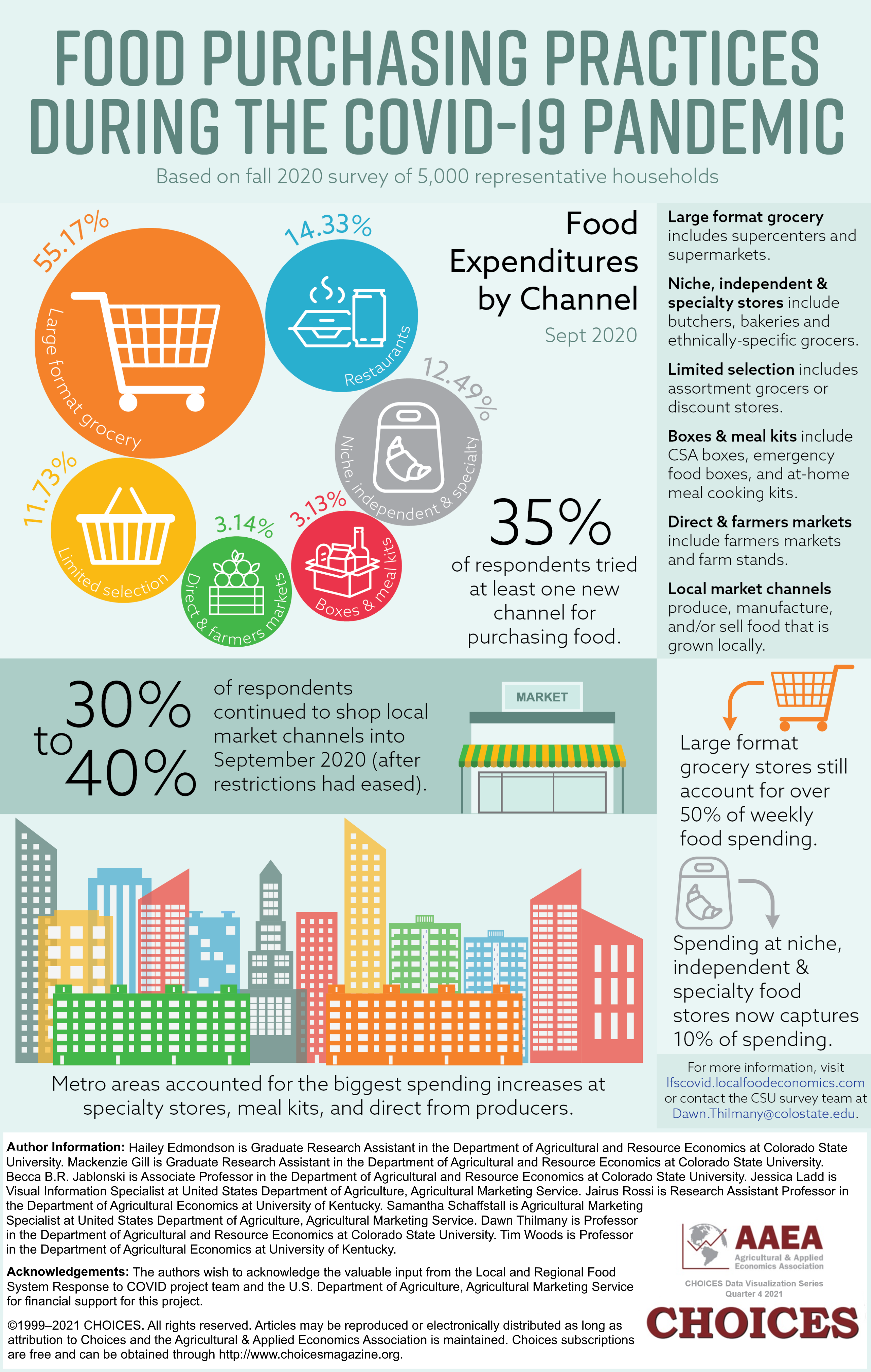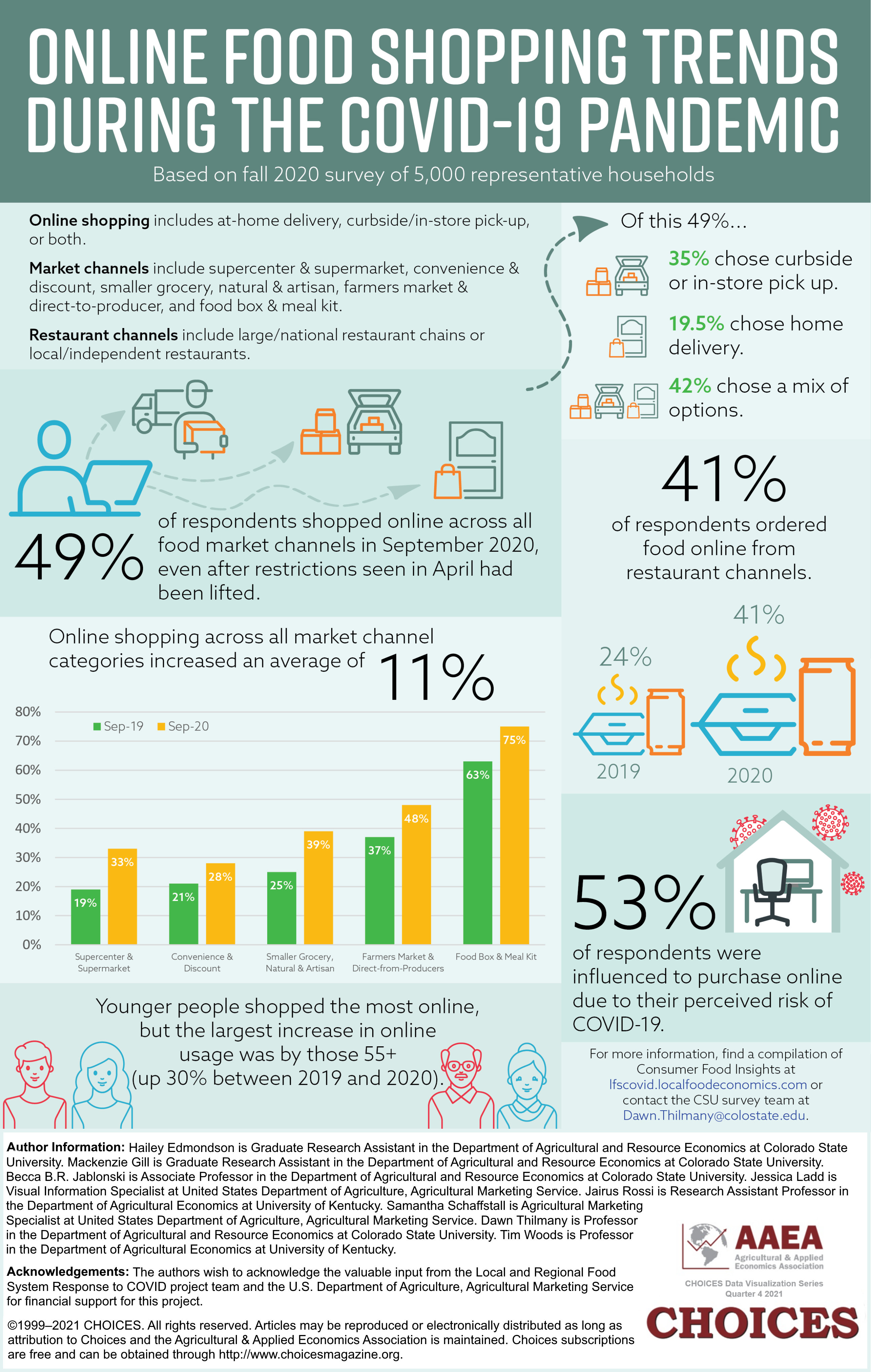
Social distancing mandates and the subsequent economic disruptions resulting from the COVID-19 pandemic caused unprecedented changes in where, how, and what food U.S. consumers purchased and acquired in 2020. To better understand these changes, a team of researchers—focused on the implications for local and regional food systems—conducted a national survey of over 5,000 households from mid-October to mid-November 2020. The survey was conducted using a Qualtrics panel. We set quotas to ensure a demographically balanced sample, with the exception of gender (as we asked the primary food shopper in the household to respond and women were more likely to play that role). A variety of demographic and COVID-related questions were asked to capture food behavior trends, including: 1) purchases of food through a variety of market channels, 2) use of online platforms, and 3) food security status. Questions gaged consumer behavior over three time periods: September 2019 (the before times), April 2020 (the pandemic begins), and September 2020 (the new normal).
Food Purchasing Practices During the COVID-19 Pandemic, Online Food Shopping Trends During the COVID-19 Pandemic, and The Effect of the COVID-19 Pandemic on Food Insecurity are infographics designed to provide valuable but brief explanations of our research findings.
Food Purchasing Practices During the COVID-19 Pandemic provides insight into where households spent their food dollars. One key innovation of the survey was asking about specific market channel usage, noting which channels were used for the first time during the pandemic (April 2020) and if they continued throughout the pandemic (September 2020). Our hypothesis is that consumers that used a channel for the first time in April 2020, and were continuing to use that channel in September 2020, are more likely to continue with this shopping behavior post-pandemic.
Online Food Shopping Trends During the COVID-19 Pandemic illustrates the changes in consumers’ online (including pickup and delivery) shopping behavior, focusing on the types of markets where online shopping habits changed and demographic characteristics (including perceived risk of COVID-19 and age). As with similar research, we found that the pandemic accelerated the movement to online shopping across all market channels and age groups.
The Effect of the COVID-19 Pandemic on Food Insecurity looks at food acquisition methods used by food insecure households as well as changes in the time spent shopping for and preparing food at home. We found that most food insecure households experienced a change of income or job after April 2020, and that 42% of our food insecure sample was not low-income prior to the pandemic. Additionally, the survey results indicate that many people using the emergency food system during the pandemic were likely not using it previously. Further analysis showed that food insecure households interreacted with the emergency system differently than they had prior to the pandemic and some were possibly using it for the first time.
We hope that these illustrations provide useful information to policymakers, Extension Agents, and nonprofit organizations that are working to help farmers and ranchers identify emerging market opportunities based on changed consumer behavior, as well as those supporting low-income households in gaining access to healthy food options. For more information, please visit: https://lfscovid.localfoodeconomics.com/consumer-food-insights/.
 |
 |